Curved front curly maple sofa table
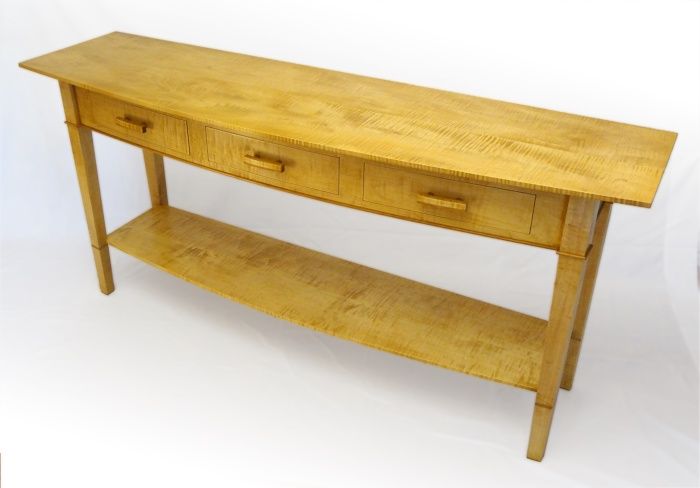
Top/Front
The ‘sofa table’ shape has always pleased me in size and functionality. The elements that I wanted to include were; 3 drawers, bottom shelf, and beveled edges under the top. I had purchased several curly maple 3/4″ S4S boards with the intention of using them for the top for this table. I didn’t want the top to be limited to 3/4″, so I decided to laminate cherry to the bottom of the top and shelf to give a finished thickness of around 1″. Then to tie the cherry into the rest of the piece, I used more cherry as an accent; as a bead around the bottom of the apron pieces, on the handles and wrapped around the legs in line with the shelf. Another addition (added new challenge) was to curve the front. The front apron and drawer fronts are a bent lamination, with the legs cut in line with the front curves (a trapezoid).
The dimensions are based on ratios with the modulus being 5.5″. The overall size is 11 (times the modulus) wide x 5 high x 3 in depth (2.5 at the shallow ends). Note the 5 to 3 ratio. For example the top is 5/8″ maple glued to 3/8″ cherry. The front apron height is 1/5th the leg height, and its width is divided by 11, with each drawer being 3 times the result. The bottom shelf is located 3/11th of the leg height from the floor.
I’ve been working more with hand tools the last few years, and this piece contains elements that showcase what can be done more easily by hand than machine. Almost all the joinery was done with hand tools. The legs were tapered, angled and smoothed by hand. The mortised legs were done by hand. The dovetailed supports and drawers were cut by hand. The curved front was finished with hand tools after being band sawn to rough shape. The only sanding done were to the top and shelf which were sanded with 1000grit and 2000grit, the front apron was sanded with a high grit to remove some planing marks. This was to help bring out the curly grain when finishing.
An aniline dye was used to enhance the curly features, then lightly sanded to remove dye that didn’t soak in. Then 4 coats of Danish oil were used to compliment the curly features. Two coats of a dull rubbed lacquer were applied to protect the piece.
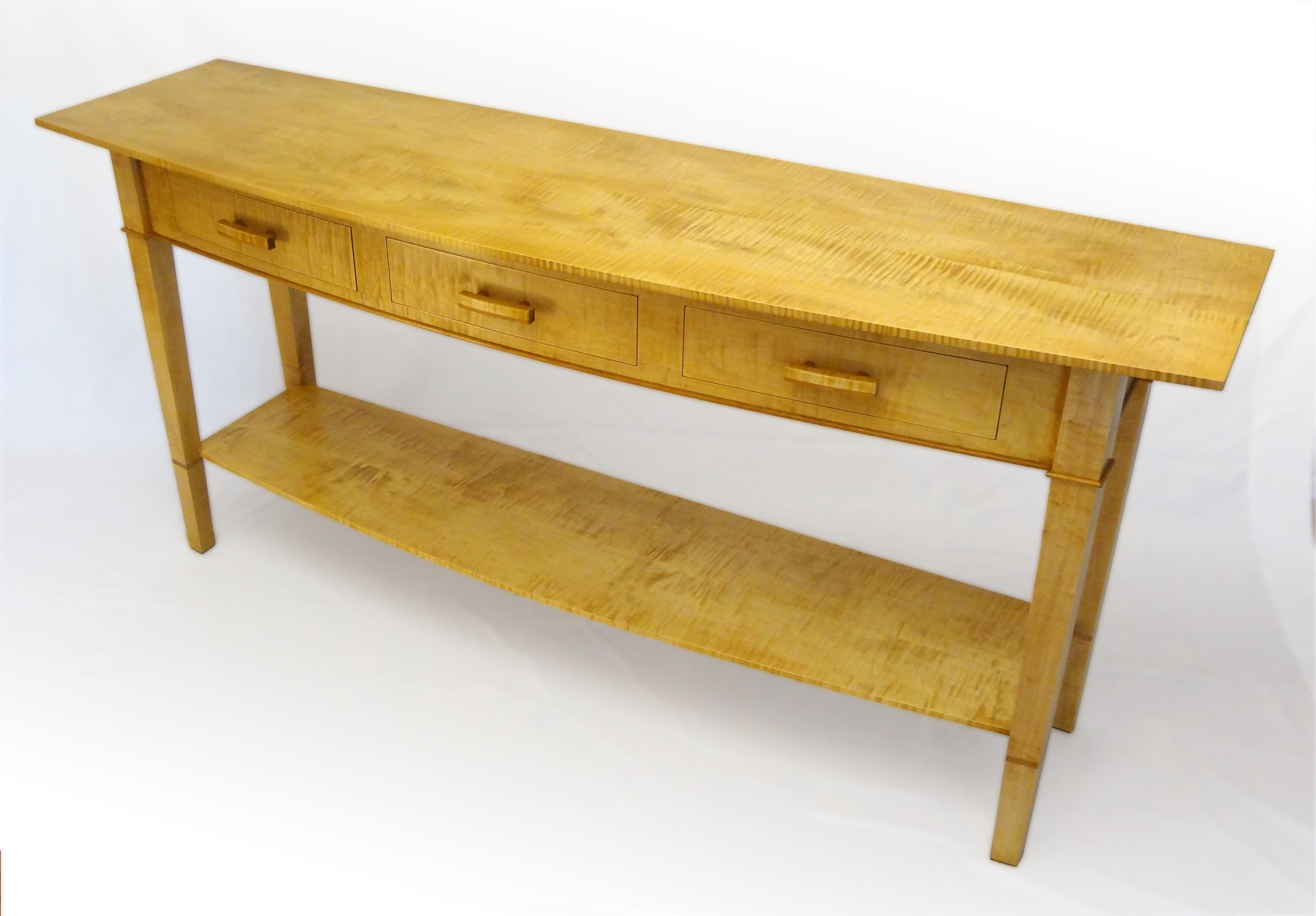
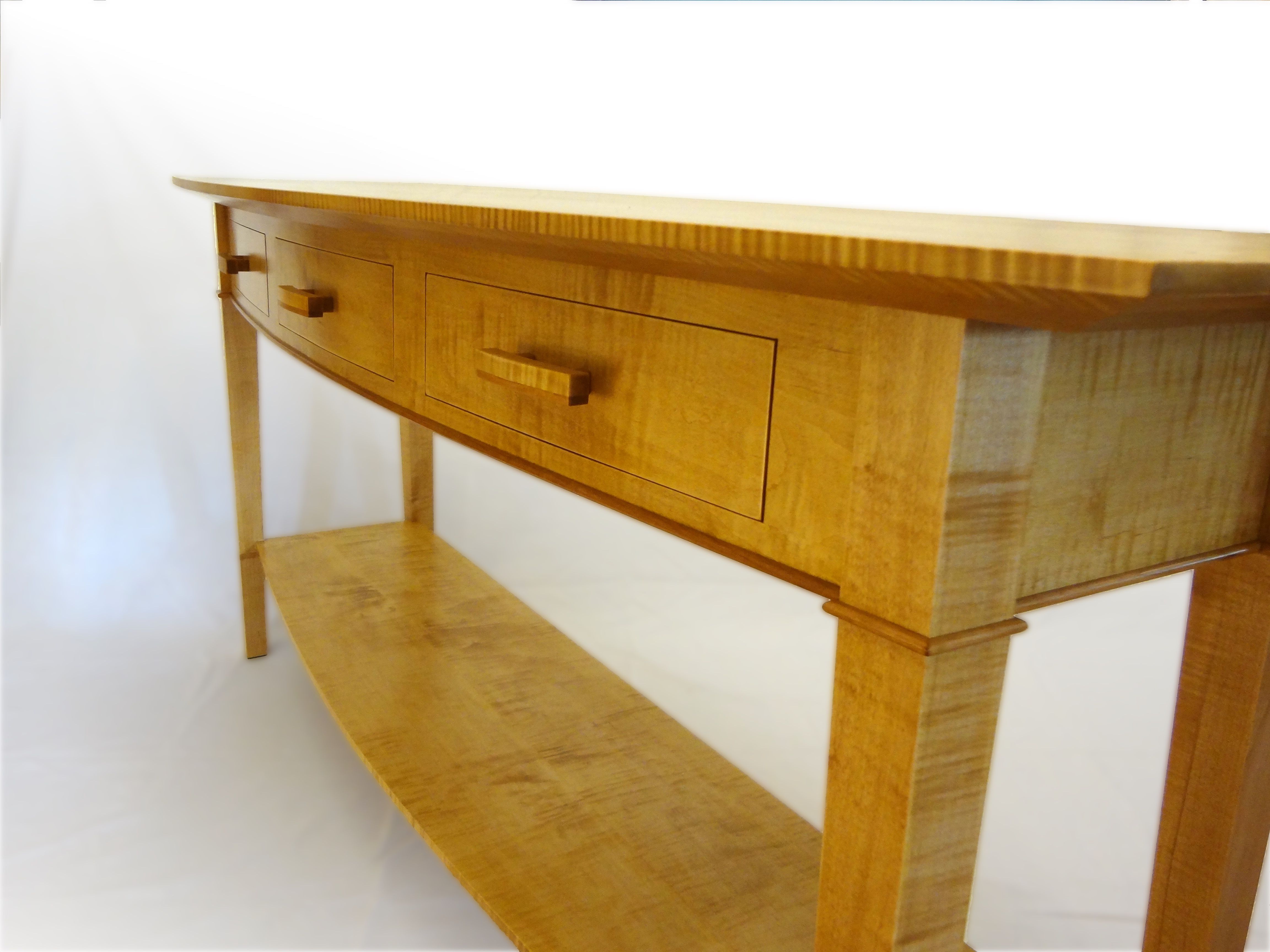



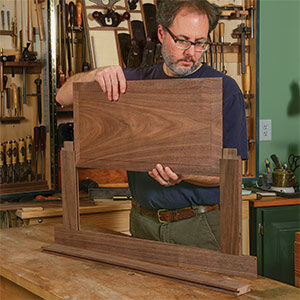

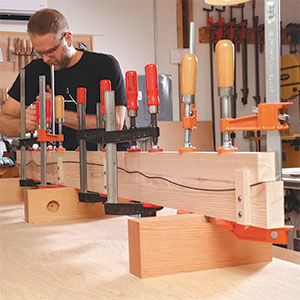












Log in or create an account to post a comment.
Sign up Log in